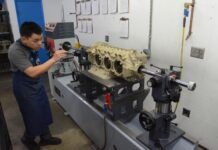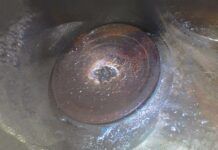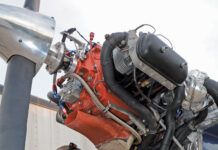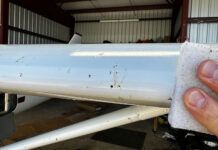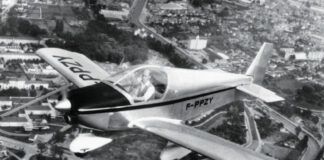It’s time. You’ve racked up 500 trouble-free flying hours since you installed a new engine. You’ve heard that both of the magneto manufacturers-Bendix and Slick-have strong opinions about 500-hour inspections. You’ve decided that it’s good advice, and you’re ready to get the work done.
Is there a lot of difference between getting a maintenance shop to do the inspection and repair, and sending the mags to a shop that specializes in magnetos? What questions should you ask of a shop before you let them do your 500-hour magneto inspections? These are all worthwhile questions that we hope to answer in photos.
Which One Do I Need?
You probably know that 500-hour magneto inspections are not mandatory; they’re not required by regulation, and many builders choose to ignore the recommendations and wait for something to go wrong before committing magneto maintenance.
But these inspections are vitally important for trouble-free flying.
Because these inspections aren’t mandated, there are differences of opinion about what should be done. One school says overhaul it-that way there won’t be any doubt. The other school says the load-bearing parts of magnetos (the housings, bearings and gears) as well as the voltage-generating parts (the coils and magnets) are vastly overbuilt and typically don’t need any ongoing maintenance between TBO periods. An IRAN, which stands for inspect and repair as needed, is considered to be sufficient by many owners and mechanics.
Just what goes into a magneto overhaul? I spent a day at Aircraft Magneto Service of Seattle, Washington, as Cliff Orcutt and his son Don disassembled, inspected and refurbished a Bendix S-200-series magneto.
A few ideas to take away from such a visit. First is experience. While the magneto is an inherently simple mechanism, overhauling one requires a combination of specialized knowledge, the ability to read a manual and a surprising number of specialized tools. It’s true that you can replace parts of the magneto on your own workbench, but leaving it to the pros will ensure everything is done right, with the proper tools, dimensionally correct and expertly timed. There is more here than meets the eye.
What Do I Have to Do?
General inspection criteria for both mags include capacitor and coil testing, a detailed visual inspection, and lubrication of bushings and cam lubrication felts. While there is no prohibition against an airframe and powerplant technician doing the 500-hour inspections in accordance with the manufacturer’s service manuals, they are required to have the specialized tools, equipment and lubricants.
Let’s follow along as Cliff and Don disassemble, inspect and reassemble a Bendix S-200 magneto. We’ll go through it step by step. Next month, we’ll tear into a common Slick magneto.
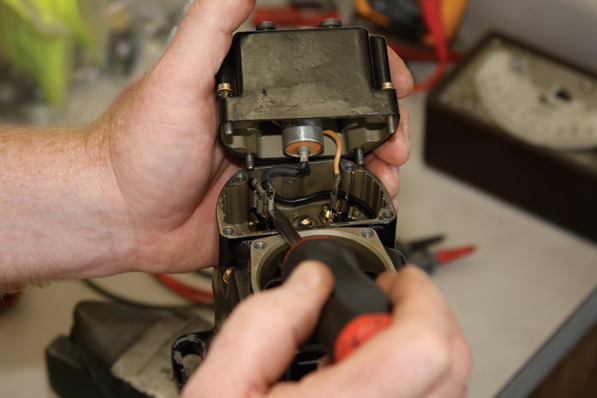
The first step of refreshing a Bendix magneto: 1. Remove breaker cover. Unscrew P-lead first; gently pull condenser lead off connector on point set.
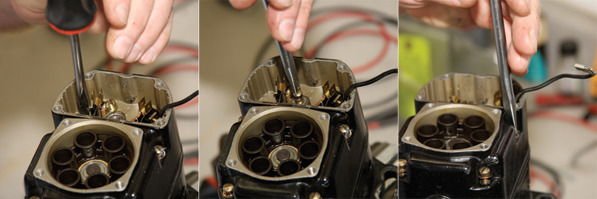
| 2. The next step is to remove the breaker and retard point sets. They should be inspected in accordance with paragraph 6-21 (3 & 4) of the service manual. Replace peaked, pitted and burned points or discard them. | 3. Remove cam. Lubricate the cam by submerging it for 30 minutes in a vat of 10-391200 distributor block lubricant heated to 200 F. | 4. Loosen distributor housing. |
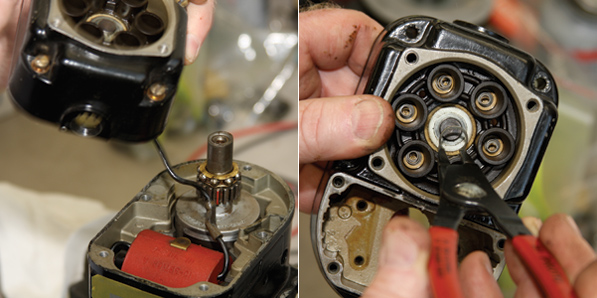
| 5. Remove distributor housing. Lift housing straight up; gently feed secondary coil wire through housing. | 6. Remove retaining large gear snap ring. Pull distributor gear shaft from distributor; note position of retaining rings and washers. Throw the snap ring away. |
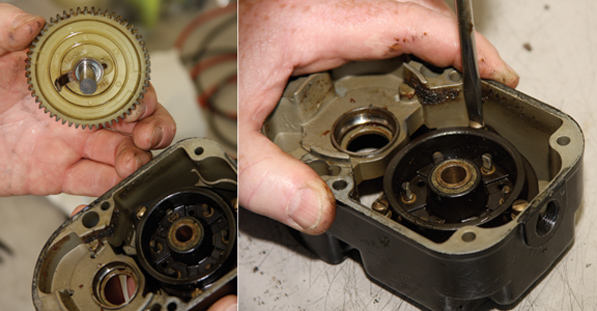
| 7. Remove large distributor gear. Inspect gear, gear electrode and distributor block. Generously apply MS-122AD Teflon dry lubricant spray to the distributor gear teeth. | 8. Remove distributor block. Inspect and treat the distributor block according to instructions in Section 7-2.4. Re-lubing the bushing in the distributor block requires an oven capable of heating the block to 200 F for 2 hours. |
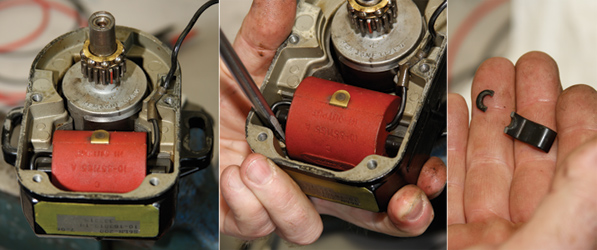
| 9. Coil and magnet in housing. Current coils are red and barrel shaped; retire all other types. Resistance in the coil primary circuit should be 0.2 to 0.6 ohms; secondary resistance should be between 12K and 16K ohms. | 10. Remove coil clamps. Discard any clamps that show wear. | 11. Note broken coil clamp. |
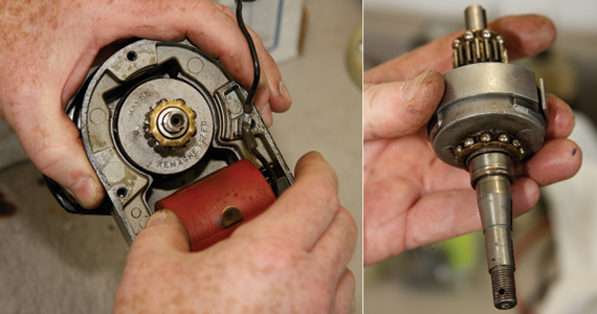
| 12. Install magnetism keeper on rotating magnet before removal from housing. Rotating magnets must be stored using the principle of a closed magnetic ring. Failure to store properly can cause reversed polarity or risk demagnetization. | 13. Magnet shaft with keeper installed. Rotating magnets with visible brass inserts or flat sides must be replaced with a current style magnet. |
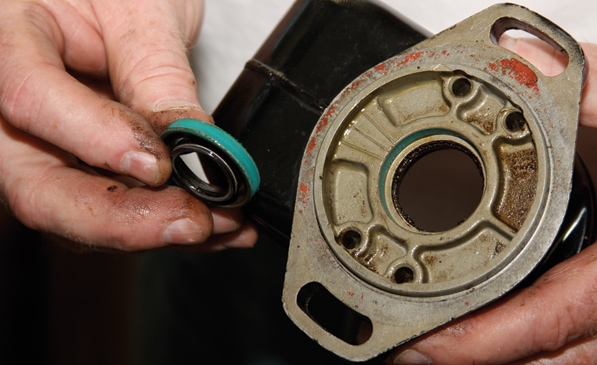
14. Remove shaft oil seal. Replace this seal during reassembly.
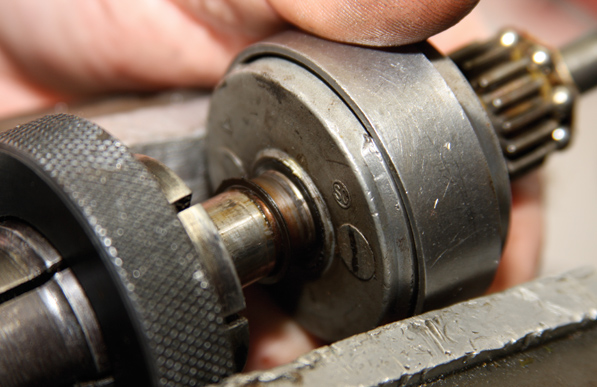
15. Remove bearing with special puller.
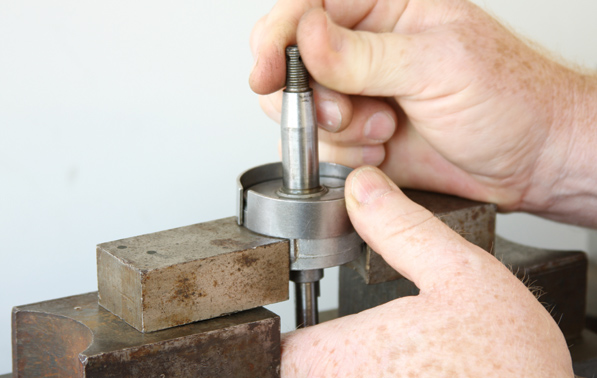
Reassembly: 1. The coil is magnetized in a special fixture, and the magnetism keeper is installed.
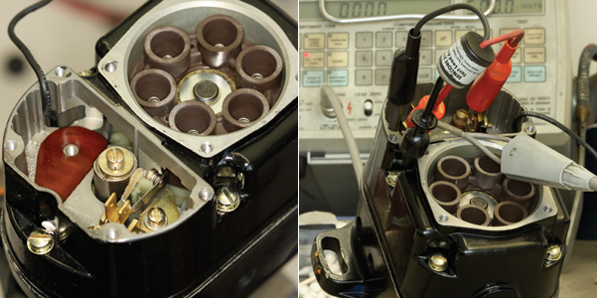
| 2. New point set is installed. Although this isn’t required during a 500-hour inspection, it’s a good idea. | 3. Point insulation and capacitor testing. Capacitance must measure 0.375 microfarads +/- 10% at room temperature. “If you have a problem with a Bendix mag, it’s almost always the condenser,” says Cliff Orcutt, who has overhauled more than 5000 Bendix and Slick magnetos. |
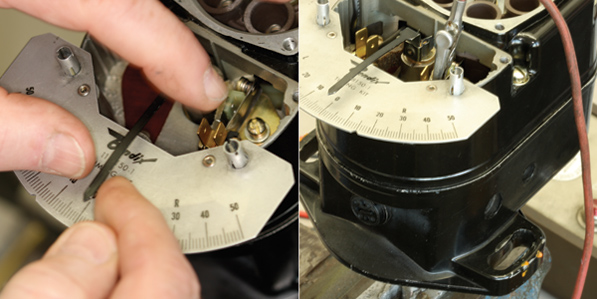
| 4. Install timing pointer tool. The pointer and the degree plate tools are temporarily installed for reference when setting point opening. | 5. Set points for proper internal timing; points should open at E gap. The maximum opening must be 0.018-inch +/- 0.006 inch. |
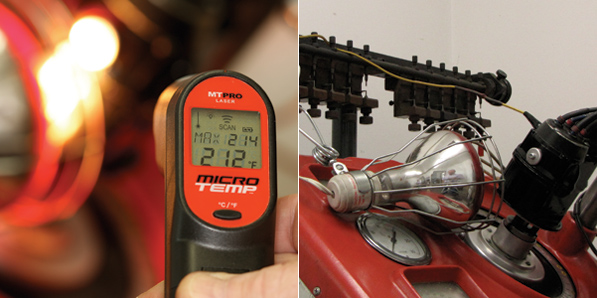
| 6. Heat magneto before testing. Raising the temperature simulates actual operating conditions during post-overhaul testing. | 7. Run the magneto final acceptance test. Tests on stand include a low-speed (coming-in speed) test where magneto must spark consistently at 150 rpm, an impulse coupling test, and a high-speed test (rpm above 3000 but no higher than 5100). This post-overhaul testing is not possible without a test stand. |

![]()
Steve Ells is what you call a gen-u-ine mechanic, a bonafide A&P with an Inspection Authorization. Former West Coast editor for AOPA Pilot and tech guy for the Cessna Pilots Association, Ells has flown and wrenched on a wide range of aircraft. He owns and wrenches (a lot!) on a classic Piper Comanche. But don’t hold that against him.



